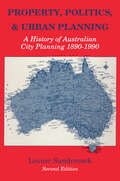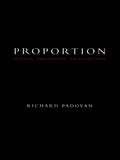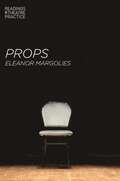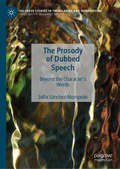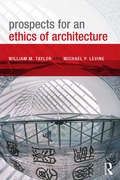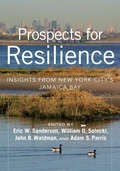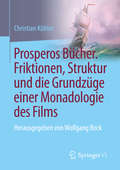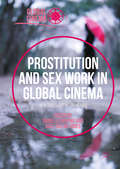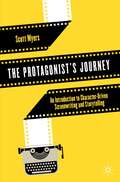- Table View
- List View
The Property Lobby: The Hidden Reality Behind the Housing Crisis
by Bob ColenuttIn this accessible and passionately argued book, Bob Colenutt goes to the roots of the long-term crisis in housing and planning in the UK. Providing a much-needed, in-depth critique of the nexus of power of landowners, house builders, financial backers and politicians that makes up the property lobby, this radical book reveals how this complex, self-serving and intimidating network perpetuates a cycle of low supply, high prices and poor building which has resulted in one of the biggest social and economic challenges of our time. With radical ideas for solutions, this is essential reading for anyone with an interest in housing, planning and social justice.
The Property Lobby: The Hidden Reality Behind the Housing Crisis
by Bob ColenuttIn this accessible and passionately argued book, Bob Colenutt goes to the roots of the long-term crisis in housing and planning in the UK. Providing a much-needed, in-depth critique of the nexus of power of landowners, house builders, financial backers and politicians that makes up the property lobby, this radical book reveals how this complex, self-serving and intimidating network perpetuates a cycle of low supply, high prices and poor building which has resulted in one of the biggest social and economic challenges of our time. With radical ideas for solutions, this is essential reading for anyone with an interest in housing, planning and social justice.
Property, Planning and Protest: The Contentious Politics of Housing Supply (Explorations in Housing Studies)
by Quintin BradleyThe struggle for the right to housing is a battle over property rights and land use. For housing to be provided as a human need, land must be recognised as a common right. Property, Planning and Protest is a compelling new investigation into public opposition to housing and real estate development. Its innovative materialist approach is grounded in the political economy of land value, and it recognises the conflict between communities and real estate capital as a struggle over land and property rights. Property, Planning and Protest is about a social movement struggling for democratic representation in land-use decisions. The amenity groups it describes champion a democratic plan-led system that allocates land for social and environmental goals. Situating this movement in a history of land reform and common rights, this book sets out a persuasive new vision of democratic planning and affordable housing for all.
Property, Planning and Protest: The Contentious Politics of Housing Supply (Explorations in Housing Studies)
by Quintin BradleyThe struggle for the right to housing is a battle over property rights and land use. For housing to be provided as a human need, land must be recognised as a common right. Property, Planning and Protest is a compelling new investigation into public opposition to housing and real estate development. Its innovative materialist approach is grounded in the political economy of land value, and it recognises the conflict between communities and real estate capital as a struggle over land and property rights. Property, Planning and Protest is about a social movement struggling for democratic representation in land-use decisions. The amenity groups it describes champion a democratic plan-led system that allocates land for social and environmental goals. Situating this movement in a history of land reform and common rights, this book sets out a persuasive new vision of democratic planning and affordable housing for all.
Property, Politics, and Urban Planning: A History of Australian City Planning 1890-1990
by Leonie SandercockThis text on the origins and history of city planning in Australian cities covers the emergence of the Town Planning Movement, and planning from the nineteenth century through to the post-1980s period. Looking at the cities of Adelaide, Melbourne and Sydney.
Property, Politics, and Urban Planning: A History of Australian City Planning 1890-1990
by Leonie SandercockThis text on the origins and history of city planning in Australian cities covers the emergence of the Town Planning Movement, and planning from the nineteenth century through to the post-1980s period. Looking at the cities of Adelaide, Melbourne and Sydney.
Property Testing: Current Research and Surveys (Lecture Notes in Computer Science #6390)
by Oded GoldreichProperty Testing is the study of super-fast (randomized) algorithms for approximate decision making. These algorithms are given direct access to items of a huge data set, and determine, whether this data set has some predetermined (global) property or is far from having this property. Remarkably, this approximate decision is made by accessing a small portion of the data set. This state-of-the-art survey presents a collection of extended abstracts and surveys of leading researchers in property testing and related areas; it reflects the program of a mini-workshop on property testing that took place in January 2010 at the Institute for Computer Science (ITCS), Tsinghua University, Beijing, China. The volume contains two editor's introductions, 10 survey papers and 18 extended abstracts.
Prophets and Ghosts: The Story of Salvage Anthropology
by Samuel J. RedmanA searching account of nineteenth-century salvage anthropology, an effort to preserve the culture of “vanishing” Indigenous peoples through dispossession of the very communities it was meant to protect. In the late nineteenth century, anthropologists, linguists, archaeologists, and other chroniclers began amassing Indigenous cultural objects—crafts, clothing, images, song recordings—by the millions. Convinced that Indigenous peoples were doomed to disappear, collectors donated these objects to museums and universities that would preserve and exhibit them. Samuel Redman dives into the archive to understand what the collectors deemed the tradition of the “vanishing Indian” and what we can learn from the complex legacy of salvage anthropology. The salvage catalog betrays a vision of Native cultures clouded by racist assumptions—a vision that had lasting consequences. The collecting practice became an engine of the American museum and significantly shaped public education and preservation, as well as popular ideas about Indigenous cultures. Prophets and Ghosts teases out the moral challenges inherent in the salvage project. Preservationists successfully maintained an important human inheritance, sometimes through collaboration with Indigenous people, but collectors’ methods also included outright theft. The resulting portrait of Indigenous culture reinforced the public’s confidence in the hierarchies of superiority and inferiority invented by “scientific” racism. Today the same salvaged objects are sources of invaluable knowledge for researchers and museum visitors. But the question of what should be done with such collections is nonetheless urgent. Redman interviews Indigenous artists and curators, who offer fresh perspectives on the history and impact of cultural salvage, pointing to new ideas on how we might contend with a challenging inheritance.
Proportion: Science, Philosophy, Architecture
by Richard PadovanThis handbook provides readers with a well-illustrated and readable comparative guide to proportion systems in architecture, setting out the mathematical principles that underlie the main systems and illustrating these with examples of their use in historical and modern buildings. The main body of the text traces the interplay of abstraction and empathy through the history of science, philosophy and architecture from the early Greeks through to the two early twentieth-century architects who made proportion the focus of their work: Le Corbusier and Van der Laan. The book ends with a reflection on the present and future role of proportion in architecture.
Proportion: Science, Philosophy, Architecture
by Richard PadovanThis handbook provides readers with a well-illustrated and readable comparative guide to proportion systems in architecture, setting out the mathematical principles that underlie the main systems and illustrating these with examples of their use in historical and modern buildings. The main body of the text traces the interplay of abstraction and empathy through the history of science, philosophy and architecture from the early Greeks through to the two early twentieth-century architects who made proportion the focus of their work: Le Corbusier and Van der Laan. The book ends with a reflection on the present and future role of proportion in architecture.
Proportionate Share Impact Fees and Development Mitigation
by Arthur C. Nelson James C. Nicholas Julian Conrad Juergensmeyer Clancy MullenAfter decades of evolving practice often tested in court, development impact fees have become institutionalized in the American planning and local government finance systems. But, they remain contentious, especially as they continue to evolve. This book is the third in a series of impact fee guidebooks for practitioners, following A Practitioner’s Guide to Development Impact Fees and Impact Fees: Proportionate Share Development Fees. Proportionate Share Impact Fees and Development Mitigation is the culmination of the authors’ careers devoted to pioneering applications of the dual rational nexus test. That test requires (1) establishing the rational nexus between the need for infrastructure, broadly defined, to mitigate the impacts of development and (2) ensuring that development mitigating its infrastructure impacts benefits proportionately. The book elevates professional practice in two ways. First, it shows how the rational nexus test can be applied to all forms of development infrastructure impact mitigation. Second, it establishes the link between professional ethics and equity as applied to proportionate share impact fees and development mitigation. The book is divided into four parts, with the first reviewing policy and legal foundations, the second detailing the planning, calculation, and implementation requirements, the third exploring economic, ethical, and equity implications, and the fourth presenting state-of-the-art case studies. Proportionate Share Impact Fees and Development Mitigation sets new standards for professional practice.
Proportionate Share Impact Fees and Development Mitigation
by Arthur C. Nelson James C. Nicholas Julian Conrad Juergensmeyer Clancy MullenAfter decades of evolving practice often tested in court, development impact fees have become institutionalized in the American planning and local government finance systems. But, they remain contentious, especially as they continue to evolve. This book is the third in a series of impact fee guidebooks for practitioners, following A Practitioner’s Guide to Development Impact Fees and Impact Fees: Proportionate Share Development Fees. Proportionate Share Impact Fees and Development Mitigation is the culmination of the authors’ careers devoted to pioneering applications of the dual rational nexus test. That test requires (1) establishing the rational nexus between the need for infrastructure, broadly defined, to mitigate the impacts of development and (2) ensuring that development mitigating its infrastructure impacts benefits proportionately. The book elevates professional practice in two ways. First, it shows how the rational nexus test can be applied to all forms of development infrastructure impact mitigation. Second, it establishes the link between professional ethics and equity as applied to proportionate share impact fees and development mitigation. The book is divided into four parts, with the first reviewing policy and legal foundations, the second detailing the planning, calculation, and implementation requirements, the third exploring economic, ethical, and equity implications, and the fourth presenting state-of-the-art case studies. Proportionate Share Impact Fees and Development Mitigation sets new standards for professional practice.
Props (Readings in Theatre Practice)
by Eleanor MargoliesProps are moving objects of attention: they can be part of theatre scenery, equal partners in performance, or autonomous things. This wide-ranging book brings together theoretical and practical viewpoints on objects in performance, covering actor training, scenography, materials, construction techniques and object theatre. Eleanor Margolies also explores the viewpoints of actors, directors, designers, prop makers and spectators to demonstrate the varied experiences practitioners have of using props.
The Prosody of Dubbed Speech: Beyond the Character's Words (Palgrave Studies in Translating and Interpreting)
by Sofía Sánchez-MompeánThis book offers a descriptive and practical analysis of prosody in dubbed speech, examining the most distinctive traits that typify dubbed dialogue at the prosodic level. The author's unique perspective - as both a translation studies researcher and a voice-over professional - helps to bring these two aspects of the dubbing process together into a coherent study for the first time. Supported by corpus analysis of English and Spanish episodes of US TV show How I Met Your Mother, she examines aspects of prosody in source and target languages, including features such as intonation, loudness, tempo, rhythm and tension. This book will be of interest to students and scholars of translation and interpreting, media studies, television and film production, as well as dubbing professionals.
Prospects for an Ethics of Architecture
by William M. Taylor Michael P. LevineBringing together the reflections of an architectural theorist and a philosopher, this book encourages philosophers and architects, scholars and designers alike, to reconsider what they do as well as what they can do in the face of challenging times. It does so by exploring the notion that architecture and design can (and possibly should), in their own right, make for a distinctive form of ethical investigation. The book is less concerned with absolutist understandings of the two components of ethics, a theory of ‘the good’ and a theory of ‘the right’, than with remaining open to multiple relations between ideas about the built environment, design practices and the plurality of kinds of human subjects (inhabitants, individuals and communities) accommodated by buildings and urban spaces. The built environment contributes to the inculcation of all sorts of values (good and bad). Thus, this book aims to change the way people commonly think about ethics, not only in relation to the built environment, but to themselves, their ways of thinking and modes of behaviour.
Prospects for an Ethics of Architecture
by William M. Taylor Michael P. LevineBringing together the reflections of an architectural theorist and a philosopher, this book encourages philosophers and architects, scholars and designers alike, to reconsider what they do as well as what they can do in the face of challenging times. It does so by exploring the notion that architecture and design can (and possibly should), in their own right, make for a distinctive form of ethical investigation. The book is less concerned with absolutist understandings of the two components of ethics, a theory of ‘the good’ and a theory of ‘the right’, than with remaining open to multiple relations between ideas about the built environment, design practices and the plurality of kinds of human subjects (inhabitants, individuals and communities) accommodated by buildings and urban spaces. The built environment contributes to the inculcation of all sorts of values (good and bad). Thus, this book aims to change the way people commonly think about ethics, not only in relation to the built environment, but to themselves, their ways of thinking and modes of behaviour.
Prospects for Resilience: Insights from New York City's Jamaica Bay
by Eric W. Sanderson, William D. Solecki, John R. Waldman and Adam S. ParrisThis volume establishes a framework for understanding resilience practice in urban watersheds. Using Jamaica Bay—the largest contiguous natural area in New York, home to millions of New Yorkers, and a hub of global air travel with John F. Kennedy International Airport—the authors demonstrate how various components of social-ecological systems interact, ranging from climatic factors to plant populations to human demographics. They also highlight essential tools for creating resilient watersheds, including monitoring and identifying system indicators; computer modeling; green infrastructure; and decision science methods. Finally, they look at the role and importance of a “boundary organization” like the new Science and Resilience Institute at Jamaica Bay in coordinating and facilitating resilience work, and consider significant research questions and prospects for the future of urban watersheds.
Prosperos Bücher. Friktionen, Struktur und die Grundzüge einer Monadologie des Films: Herausgegeben von Wolfgang Bock
by Christian KöhlerChristian Köhlers Buch ist eine komplexe und vielschichtige Arbeit über Peter Greenaways Film Properos Bücher (NL/UK 1991). Der englische Maler und Regisseur experimentierte in seiner Adaption von Shakespeares Theaterstück Der Sturm von 1611 mit einer frühen digitalen Aufnahmetechnik, der „Paintbox“ von Sony. Vor dem Hintergrund der Filmtheorie von Gilles Deleuze analysiert Köhler die Voraussetzungen und Hintergründe dieses Films und interpretiert die Übergänge zwischen empirischem und ästhetischem Leben für die Möglichkeiten des Mediums insgesamt.
Prostate Cancer Imaging: International Workshop, Held in Conjunction with MICCAI 2010, Beijing, China, September 24, 2010, Proceedings (Lecture Notes in Computer Science #6367)
by Pingkun Yan Aaron Fenster Purang Abolmaesumi Nobuhiko Hata Anant Madabhushi Jason DowlingProstatic adenocarcinoma (CAP) is the second most common malignancy with an estimated 190,000 new cases in the USA in 2010 (Source: American Cancer Society), and is the most frequently diagnosed cancer among men. If CAP is caught early, men have a high, five-year survival rate. Unfortunately there is no standardized ima- based screening protocol for early detection of CAP (unlike for breast cancers). In the USA high levels of prostate-specific antigen (PSA) warrant a trans-rectal ultrasound (TRUS) biopsy to enable histologic confirmation of presence or absence of CAP. With recent rapid developments in multi-parametric radiological imaging te- niques (spectroscopy, dynamic contrast enhanced MR imaging, PET, RF ultrasound), some of these functional and metabolic imaging modalities are allowing for definition of high resolution, multi-modal signatures for prostate cancer in vivo. Distinct com- tational and technological challenges for multi-modal data registration and classifi- tion still remain in leveraging this multi-parametric data for directing therapy and optimizing biopsy. Additionally, with the recent advent of whole slide digital sc- ners, digitized histopathology has become amenable to computerized image analysis. While it is known that outcome of prostate cancer (prognosis) is highly correlated with Gleason grade, pathologists often have difficulty in distinguishing between interme- ate Gleason grades from histopathology. Development of computerized image analysis methods for automated Gleason grading and predicting outcome on histopathology have to confront the significant computational challenges associated with working these very large digitized images.
Prostate Cancer Imaging. Image Analysis and Image-Guided Interventions: International Workshop, Held in Conjunction with MICCAI 2011, Toronto, Canada, September 22, 2011, Proceedings (Lecture Notes in Computer Science #6963)
by Anant Madabhushi Jason Dowling Henkjan Huisman Dean BarrattThis book constitutes the refereed proceedings of the International Workshop on Prostate Cancer Imaging, held in conjunction with MICCAI 2011, in Toronto, Canada, in September 2011. The 15 revised full papers presented together with 2 invited talks were carefully reviewed and selected from 19 submissions. The papers cover the clinical areas of radiology, radiation oncology, and image guided intervention, addressing topics such as prostate segmentation, multi-modal prostate registration, and computer-aided diagnosis and classification of prostate cancer.
Prostitution and Sex Work in Global Cinema: New Takes on Fallen Women
by Danielle Hipkins Kate Taylor-JonesThis volume brings together international scholars to engage in the question of how film has represented a figure that for many is simply labelled ‘prostitute’. The prostitute is one of the most enduring female figures. She has global historical resonance and stories, images and narratives surrounding her, and her experiences, circulate transnationally. As this book will explore, the broad term prostitute can cover a variety of experiences and representations that are both repressive and also have the potential to empower women and disrupt cultural expectations. The contributors aim to consider how frequently 19th-century narratives of female prostitution—hence the label ‘fallen women’—are still recycled in contemporary visual contexts, and to understand how widespread, and in what contexts, the destigmatization of female sex work is underway on screen.
Prostitution and Sex Work in Global Cinema: New Takes on Fallen Women
by Danielle Hipkins Kate Taylor-JonesThis volume brings together international scholars to engage in the question of how film has represented a figure that for many is simply labelled ‘prostitute’. The prostitute is one of the most enduring female figures. She has global historical resonance and stories, images and narratives surrounding her, and her experiences, circulate transnationally. As this book will explore, the broad term prostitute can cover a variety of experiences and representations that are both repressive and also have the potential to empower women and disrupt cultural expectations. The contributors aim to consider how frequently 19th-century narratives of female prostitution—hence the label ‘fallen women’—are still recycled in contemporary visual contexts, and to understand how widespread, and in what contexts, the destigmatization of female sex work is underway on screen.
The Protagonist's Journey: An Introduction to Character-Driven Screenwriting and Storytelling
by Scott MyersCharacter drives plot. Based on this principle, this book walks aspiring writers through the fascinating world of character-driven screenwriting. When a writer engages their characters, they start a process which naturally leads to the story’s structure and everything else that makes for a well-written narrative. Exploring the protagonist’s journey and their “unity arc,” Myers explains how a family of characters surrounds the protagonist and influences their transformation process. This easy-to-follow guide features activities that will help writers of any level develop their stories from concept to scene-by-scene outline. Based upon a popular workshop Myers has led with over a thousand writers at all levels of experience, this book is a must-have for screenwriting students, both undergraduate and graduate, and those looking at advanced story development.
The Protected Vista: An Intellectual and Cultural History (Routledge Research in Architectural Conservation and Historic Preservation)
by Tom BrigdenThe Protected Vista draws a historical lineage from the eighteenth-century picturesque to present-day planning policy, highlighting how the values embedded within familiar views have developed over time through appropriation by diverse groups for cultural and political purposes. The book examines the intellectual construction of the protected vista, questioning the values entrenched within the view, by whom, and how they are observed and disseminated, to reveal how these views have been, and continue to be, part of a changing historical and political narrative. With a deeper knowledge and understanding of the shifting values in urban views, we will be better equipped to make decisions surrounding their protection in our urban centres. The book identifies the origins of current view protection policy in the aesthetic convention of the picturesque, drawing on a range of illustrated examples in the UK, the US, Australia, Canada and South Africa, to serve as a useful reference for students, researchers and academics in architecture, architectural conservation, landscape and urban planning.
The Protected Vista: An Intellectual and Cultural History (Routledge Research in Architectural Conservation and Historic Preservation)
by Tom BrigdenThe Protected Vista draws a historical lineage from the eighteenth-century picturesque to present-day planning policy, highlighting how the values embedded within familiar views have developed over time through appropriation by diverse groups for cultural and political purposes. The book examines the intellectual construction of the protected vista, questioning the values entrenched within the view, by whom, and how they are observed and disseminated, to reveal how these views have been, and continue to be, part of a changing historical and political narrative. With a deeper knowledge and understanding of the shifting values in urban views, we will be better equipped to make decisions surrounding their protection in our urban centres. The book identifies the origins of current view protection policy in the aesthetic convention of the picturesque, drawing on a range of illustrated examples in the UK, the US, Australia, Canada and South Africa, to serve as a useful reference for students, researchers and academics in architecture, architectural conservation, landscape and urban planning.


